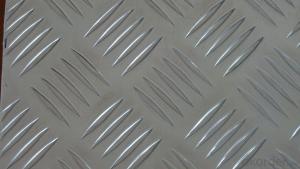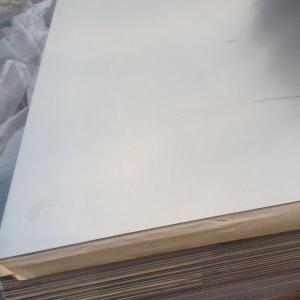5052 Aluminum Sheet for Exterior Decoration
- Loading Port:
- Shanghai
- Payment Terms:
- TT OR LC
- Min Order Qty:
- 5 m.t.
- Supply Capability:
- 20000 m.t./month
OKorder Service Pledge
OKorder Financial Service
You Might Also Like
Item specifice
Common Aluminum Sheet Coil
1. Place of Origin: ZheJiang, China (Mainland)
2. Model Number: 1050/1060/3003/3004/5052/8011
3. Thickness: 0.20-20.0 mm
4. Width: 1000-1700 mm
Packaging & Delivery
1. Coating: Wooden Pallet for Exporting
2. Delivery Detail: 25-30 Days
Specifications
Aluminum Sheet
1. Alloy: 3003A1050/1060/3003/3004/5052/8011
3. Thickness (mm): 0.20-20.0
4. Width (mm): 1000 mm to 170 0mm, Customer Specific Width
5. Finish: Mill, Customer Specific Finish
Our main products are aluminum alloy thick sheet
PS/CTP plate (1050)
anodic oxidation / 3003/5052 (1060/1070)
automotive aluminum alloy (5754/6111/6061)
soldering material (3003/4004)
IT used materials (3003/5052)
the LED base material, material can (3004/3104)
the tank cover and TAB (5052/5182)
aluminous model with substrate (1100)
medicinal foil (8011)
household foil aluminum foil (1235) (8011)
Service
1. We have the good and professional team, have a good after-sales service.
2. Accept any drawings or your samples to develop new product.
3. Offer relateive technical support,quick response,all your inquire will replied within 24 hours.
4. OEM, buyer design, buyer label services provided.
5. Have the certification of ISO 9001, SGS.
6. Special discount and protection of sales area provided to our distributor.
FAQ
Q1:Do you provide sample? How many days will samples be finished?
Free samples will be provided if needed, but customers should undertake shipping cost or freight charges, samples will be finished in 5-7days
Q2: Can we visit your factory?
Welcome to our factory at any time.
Q3: Complaint solving process
Finding your salesman—Salesman provide you the solution (If it’s our responsibility, we will resend substitutes or return money or provide discount for your next order, etc.; If it’s shipping company’s responsibility, we will also help you until the problem is resolved.) —If salesman can’t solve your problem, please call our manager .
Q4: Delivery time
3~30working days after confirming the payment. If the order is urgent, we will push our workers to finish in advance.
Q5: What's your MOQ?
Normally 8MT are requested as the minium order quantity ,we shall give
additional instructions in special circumstances.
Q6: What are the terms of payment and currencies do you accept?
T/T or L/C is accepted, currently we appreciated your payment through
USD,EUR, RMB
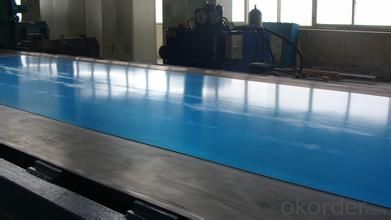
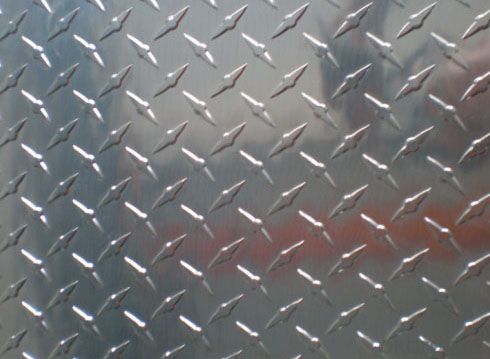
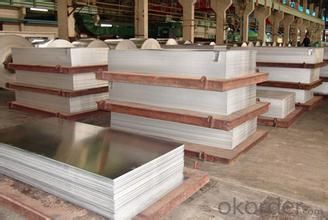

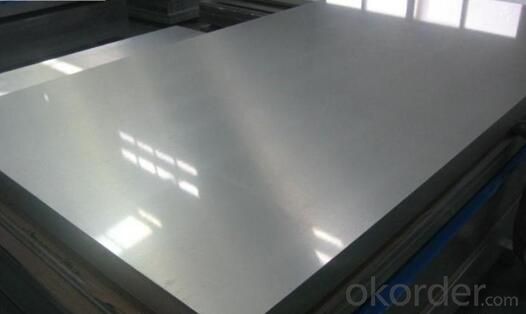
- Q:... initial temperature of the water or the initial temperature of the aluminum? Why?
- Let's say the aluminum starts out at a higher temperature than the water. The aluminum cools down by 1°C, which means it loses energy (Q = mcΔT, where ΔT = 1°C). That energy goes to the water, warming it up. Since Q is the same for both water and aluminum, and m is the same for both, all that matters is the heat capacity c. Water has a higher heat capacity than aluminum, so for the same Q it must have a smaller ΔT. This process continues until both have reached the same T. From the above paragraph, you should be able to figure out if the final T is closer to the initial water temp or the original aluminum temp.
- Q:Can the aluminum sheets be used for manufacturing heat exchanger fins?
- Yes, aluminum sheets can be used for manufacturing heat exchanger fins.
- Q:What is the thermal conductivity of 101 aluminum sheets?
- The thermal conductivity of 101 aluminum sheets depends on various factors such as the thickness of the sheets, the purity of the aluminum, and the temperature at which the measurement is taken. Generally, aluminum has a high thermal conductivity, ranging from 205 to 250 watts per meter kelvin (W/mK). However, it is advisable to refer to specific technical data or consult with a manufacturer for accurate information on the thermal conductivity of 101 aluminum sheets.
- Q:Are aluminum sheets suitable for use in cryogenic environments?
- Yes, aluminum sheets are suitable for use in cryogenic environments. Aluminum has excellent thermal conductivity and low density, making it an ideal material for cryogenic applications. It can withstand extremely low temperatures without losing its structural integrity or experiencing significant thermal expansion. Additionally, aluminum has good corrosion resistance and can be easily fabricated into various shapes and sizes. These properties make aluminum sheets commonly used in cryogenic systems, such as cryostats, superconducting magnets, and liquid nitrogen storage tanks.
- Q:What are the different methods for perforating aluminum sheets?
- There are several different methods for perforating aluminum sheets, each with its own advantages and applications. Some of the most common methods include: 1. Punching: Punching is one of the most traditional methods for perforating aluminum sheets. It involves using a punch and die set to create holes in the material. This method is efficient and cost-effective for producing simple hole patterns and is commonly used in industries such as automotive and construction. 2. Laser cutting: Laser cutting is a precise and versatile method for perforating aluminum sheets. It uses a high-powered laser beam to vaporize or melt the metal, creating intricate and complex hole patterns. This method is highly accurate, fast, and suitable for a wide range of applications, including decorative and functional perforations. 3. Waterjet cutting: Waterjet cutting is another popular method for perforating aluminum sheets. It uses a high-pressure jet of water mixed with abrasive materials to erode the metal and create holes. Waterjet cutting is known for its ability to cut through thick aluminum sheets and produce clean and precise edges. It is commonly used in industries such as aerospace and architecture. 4. Rotary perforating: Rotary perforating involves using a rotating cylindrical tool with sharp blades or teeth to perforate aluminum sheets. This method is ideal for producing continuous perforations or creating patterns that require curved or irregular hole shapes. Rotary perforating is commonly used in applications such as filtration systems and acoustic panels. 5. Pressing: Pressing, also known as embossing or stamping, is a method that involves pressing a patterned die into an aluminum sheet to create raised or sunken areas. These areas can act as perforations, providing aesthetic appeal or functional applications such as slip resistance. Pressing can be achieved using hydraulic or mechanical presses and is commonly used in industries such as architecture and interior design. It is worth noting that the choice of perforation method depends on various factors, including the desired hole pattern, material thickness, production volume, and budget. Consulting with a perforation specialist can help determine the most suitable method for a specific application.
- Q:What are the different surface treatments available for aluminum sheet?
- There are several surface treatments available for aluminum sheet, including anodizing, powder coating, painting, and polishing. Anodizing provides a durable and corrosion-resistant finish, while powder coating offers a wide range of colors and enhanced durability. Painting allows for customization with various finishes and colors, while polishing provides a shiny and reflective surface. Each treatment option offers different aesthetic and functional benefits, depending on the specific requirements and desired outcome.
- Q:What is the difference between aluminium plate 5A05 and 5A06?
- The aluminum plate doesn't have this material. Have you made a mistake?Give you a full one,1, pure aluminum: Material: 1050/1060/1070/1100/ 1200/ thickness: 0.1---20mm width: 800---2200mm2, alloy aluminum: Material: 2A21/3003/5052/5083/6061/6082 /8011 thickness: 0.5---260mm width: 800---2800mm3 curtain wall Kaiping aluminum plate: Material: 1060/1100 thickness 0.95, 1.35, 1.85, 2.35, 2.7, 2.85mm, width 0.8---1.5m
- Q:What's the difference between 6061 aluminum plate, 7075 aluminium plate and 6063 aluminum plate?
- Simply put, 6061 and 6063 belong to the 6 series, 6061 hardness in 90HB 6063 in 80HB, suitable for brazing, surface oxidation treatment is better, 7075 T6 hardness in 150HB, hardness is highestUsually 6061 and 6063 can be common
- Q:What is the thermal conductivity of aluminum sheets?
- The thermal conductivity of aluminum sheets is approximately 205-230 watts per meter-kelvin.
- Q:Are aluminum sheets suitable for lighting fixtures?
- Yes, aluminum sheets are suitable for lighting fixtures. Aluminum is a lightweight and durable material that can be easily shaped and manipulated to create various designs for lighting fixtures. It also has excellent heat dissipation properties, which is crucial for ensuring the longevity and performance of lighting fixtures. Additionally, aluminum is corrosion-resistant, making it suitable for both indoor and outdoor lighting applications.
1. Manufacturer Overview |
|
|---|---|
| Location | |
| Year Established | |
| Annual Output Value | |
| Main Markets | |
| Company Certifications | |
2. Manufacturer Certificates |
|
|---|---|
| a) Certification Name | |
| Range | |
| Reference | |
| Validity Period | |
3. Manufacturer Capability |
|
|---|---|
| a)Trade Capacity | |
| Nearest Port | |
| Export Percentage | |
| No.of Employees in Trade Department | |
| Language Spoken: | |
| b)Factory Information | |
| Factory Size: | |
| No. of Production Lines | |
| Contract Manufacturing | |
| Product Price Range | |
Send your message to us
5052 Aluminum Sheet for Exterior Decoration
- Loading Port:
- Shanghai
- Payment Terms:
- TT OR LC
- Min Order Qty:
- 5 m.t.
- Supply Capability:
- 20000 m.t./month
OKorder Service Pledge
OKorder Financial Service
Similar products
New products
Hot products
Hot Searches
Related keywords
